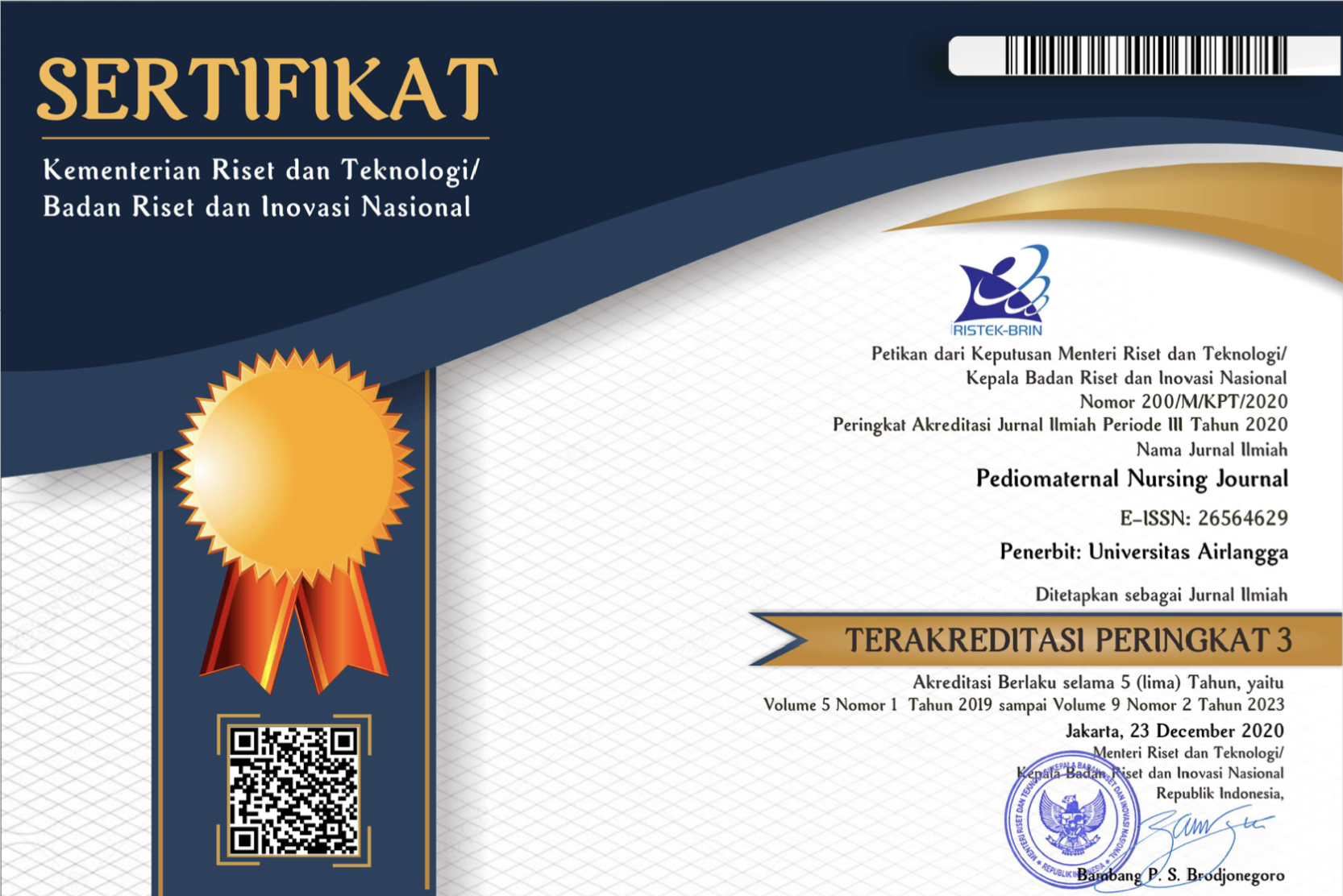Faktor yang berhubungan dengan Praktik Vaginal douching pada Wanita Usia Subur dengan Pendekatan Teori Health Belief Model
Downloads
Introduction: The practice of vaginal douching is still widely practiced by women of childbearing age without an indication of health. The aim of this research is to know the relationship between factors of vaginal douching practice based on the Health Belief Model Theory among women of child-bearing age.
Methods: This research was conducted by using descriptive analytic design with cross sectional approach. Population of this research are women child-bearing age in Gelangan Village. Sample on this research was 169 respondents which were chosen by using cluster sampling technique. Independent variables in this research were perceived of seriousness, perceived of suscepbility, perceived of benefits, perceived of barriers, cues to action and self-efficacy. Dependent variable in this research was vaginal douching practice. The data colleting technique used in this research was questionnaire which was analysed by using Regresi Logistic test with α ≤0,05 level significance.
Results: The result showed that perceived benefits (p=0.008) and perceived barriers (p=0.001) were correlated with vaginal douching practice. However, perceived seriousness (p=0.809), perceived suscepbility (p=0.272), cues to action (0.420) and self-efficacy (p=0.228) were not correlated with vaginal douching practice among women child-bearing age.
Conclusion: Perceived of high benefits and perceived of low barriers was increased vaginal douching practice among women child-bearing age. However, other components of HBM theory such as perceived seriousness, perceived suscepbility, cues to action and self-efficacy were not related to vaginal douching practice. The next research were expected to explore related modifying factors.
Nurhudhariani R, Hardiyaningsih L. Fenomena Vagina Practice Terhadap Kesehatan Reproduksi Wanita Usia Subur Di Purwodadi. Semin Nas Kesehat Reproduksi Menuju Gener Emas. 2017;1(1):101–7.
Marlena R. Hubungan Vaginal Douching Dengan Kejadiankeputihan Pada Wanita Usia Muda. 2016;
Aslan E, Bechelaghem N. To ‘ douche ' or not to ‘ douche ': hygiene habits may have detrimental effects on vaginal microbiota. J Obstet Gynaecol (Lahore). 2018;0(0):1–4.
Cottrell BH. An Updated Review of of Evidence to Discourage Douching. MCN, Am J Matern Nurs. 2010 Mar;35(2):102–7.
Supriyatiningsih S. Monograf Penggunaan Vaginal Douching Terhadap Kejadian Candidiasis Pada Kasus Leukorea. 2015;
Widyasari DN. Faktor-Faktor Yang Berhubungan Dengan Praktik Vaginal Douching Yang Berisiko Menularkan Ims Pada Wps Di Resosialisasi Argorejo Semarang. Universitas Negeri Semarang; 2016.
Yanikkerem E, Yasayan A. Vaginal douching practice: Frequency, associated factors and relationship with vulvovaginal symptoms. J Pak Med Assoc. 2016;66(4):387–92.
Hayden J. Introduction to Health Behavior Theory. Massachusetts: Jones and Bartlett Publishers; 2009.
Glanz K, Rimer BK, Viswanath K (Kasisomayajula), Orleans CT. Health behavior and health education : theory, research, and practice. Jossey-Bass; 2008. p. 552.
Caliskan D, Subasi N, Sarisen O. Vaginal douching and associated factors among married women attending a family planning clinic or a gynecology clinic. Eur J Obstet Gynecol Reprod Biol. 2006 Aug;127(2):244–51.
Kukulu K. Vaginal douching practices and beliefs in Turkey. Cult Health Sex. 2006 Jul;8(4):371–8.
Notoatmodjo S. Metodologi penelitian Kesehatan. Jakarta: Rineka Cipta; 2010.
DiClemente RJ, Young AM, Painter JL, Wingood GM, Rose E, Sales JM. Prevalence and Correlates of Recent Vaginal Douching among African American Adolescent Females. J Pediatr Adolesc Gynecol. 2012 Feb;25(1):48–53.
Sarafino EP. Health Psychology; Biopsychosocial interactions. 2006.
Jenkins AL, Crann SE, Money DM, O'Doherty KC. "Clean and Fresh”: Understanding Women's use of Vaginal Hygiene Products. Sex Roles. 2018 May;78(9–10):697–709.
Chussurur, Mifta Hidayat, Thulus Agustin RW. Pengaruh pemberian cerita melalui media audiovisual terhadap. Universitas Sebelas Maret Surakarta; 2011.
Hendiarto Y, Hamidah. Hubungan antara Self-Efficacy dengan Perilaku Sehat pada Penderita Jantung Koroner. Vol. 03, Jurnal Psikologi Klinis dan Kesehatan Mental. 2014.
Copyright (c) 2019 Gaharuni Sahika Mutdinia, Retnayu Pradanie, Tiyas Kusumaningrum

This work is licensed under a Creative Commons Attribution 4.0 International License.
1. The journal allows the author to hold the copyright of the article without restrictions.
2. The journal allows the author(s) to retain publishing rights without restrictions.
3. The legal formal aspect of journal publication accessibility refers to Creative Commons Attribution (CC BY).





















